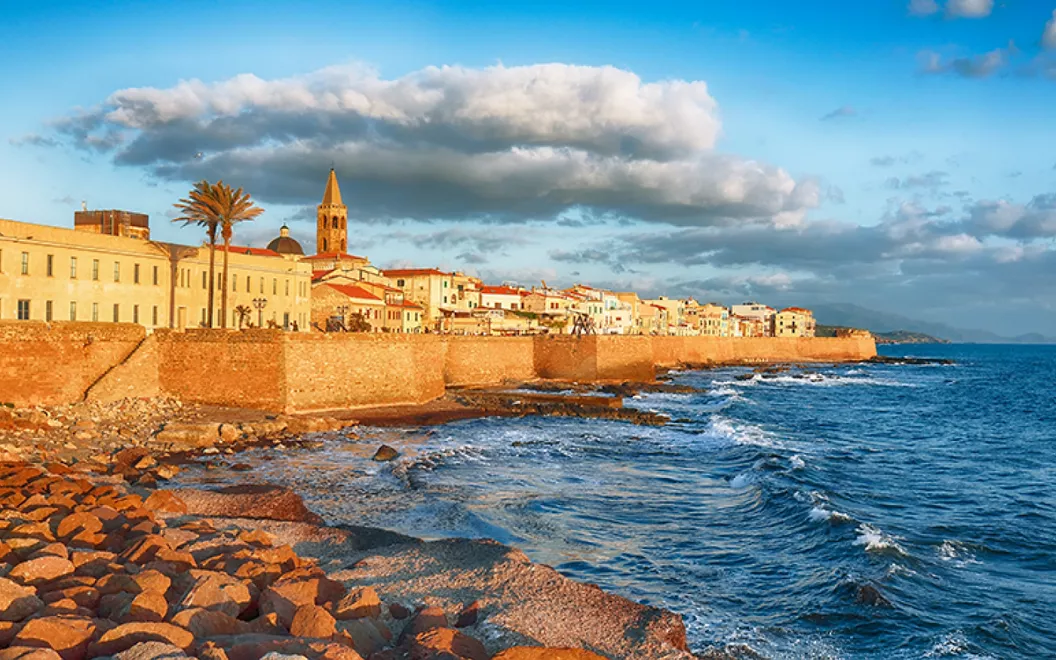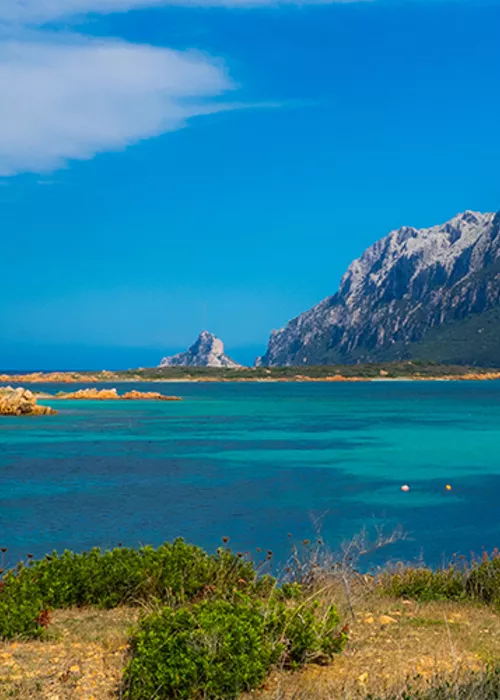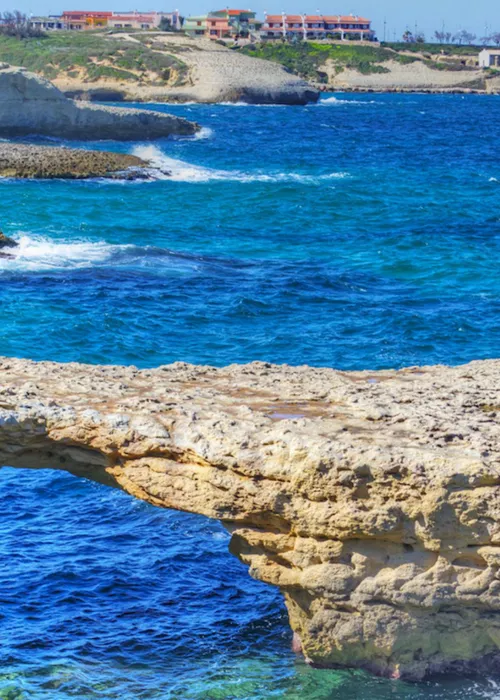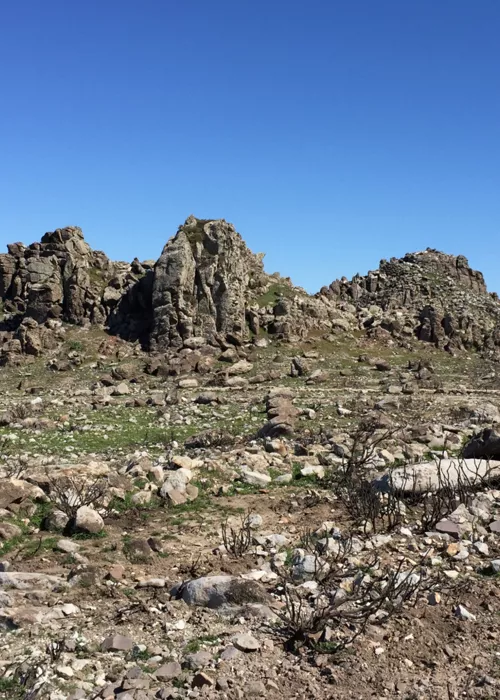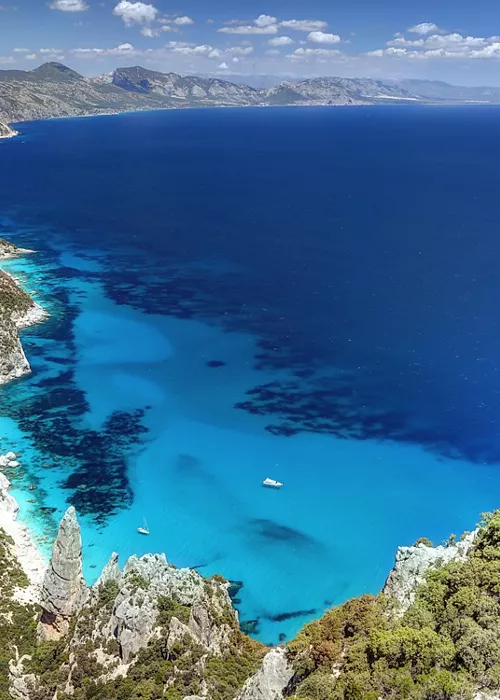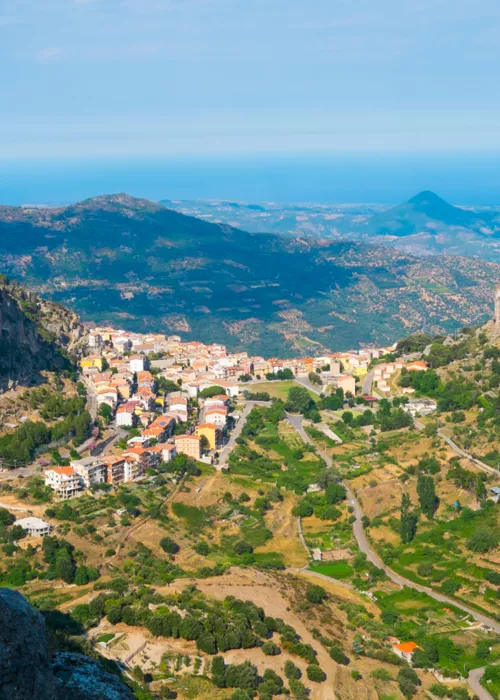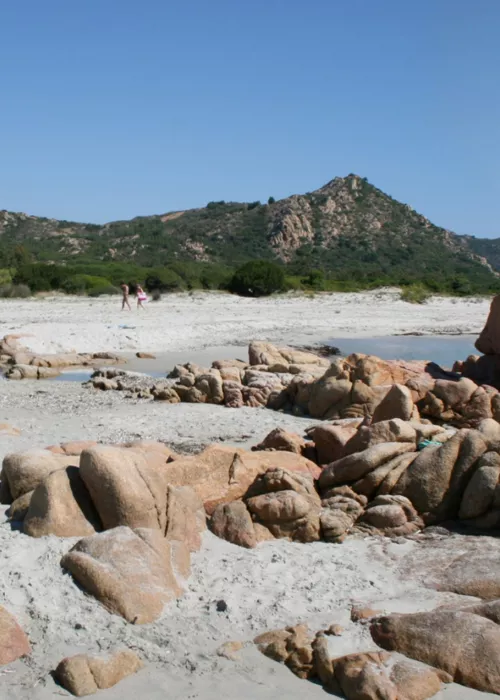On the trail of ancient civilisations, from Cagliari to Santa Margherita di Pula

You'll board in Cagliari, the city that symbolises Sardinia, characterised by its neo-Latin dialect with prehistoric nuances. Dominated by its castle, Castello di San Michele, the Bonaria cathedral and the splendid Royal Palace, the city is reflected in the waters of the magnificent Poetto beach and the Molentargius wetlands, which every year welcome a huge flock of pink flamingos.
Visit the Archaeological Museum to learn more about the origins of this Mediterranean civilisation and its relations with the Greeks, Phoenicians and Egyptians. These ancient contacts influenced the history, culture and culinary traditions of Cagliari as much as its location, in a fertile land overlooking a splendid sea well-stocked with fish.
Burrida, cassada or panada stuffed with eel, followed by typical malloreddus pasta and porceddu (roast piglet): these are just some of the seafood and meat dishes that go well with the wide variety of local wines, such as Vermentino Cagliari DOC.
What could be more sublime than the deliciously sweet taste of a Seada, accompanied by a glass of Moscato.
From here, hop aboard to explore the southwestern coast, then head west.
Setting a southward course, after about 25 miles you will reach Santa Margherita di Pula, where you can go ashore to view one of Sardinia's cherished historic landmarks: the ancient city of Nora, where the Nuraghi, then the Phoenicians and finally the Romans have left indelible marks of their presence. These incredible treasures make the Archaeological Park of Nora one of a kind.
Located on Capo Pula, the park houses the remains of Italy's oldest Phoenician settlement, which later became a Punic and then a Roman city. These layers of history have survived for centuries and are a true gift to historians. This incredible legacy is now preserved at the Giovanni Patroni Museum in Pula and the Archaeological Museum of Cagliari.
The crystal-clear sea, lapping the shores of sandy beaches, contrasts with the rugged mountains of the immediate hinterland.
You will be amazed by the beautiful scenery of the Is Cannoneris and Pixinamanna forests.
Well-signposted hiking trails take you right into the heart of the holm oak forests and Mediterranean scrubland, amid conifers and rare plants. You can admire the many rock formations shaped by time, with flowing streams and signs of prehistoric civilisations in this natural oasis populated by wild deer.From Cape Spartivento to Carloforte, with the best tuna in the Mediterranean

Back onboard, once past Cape Spartivento, with a close eye on the currents and the Libeccio wind, about 30 miles further on you will sail around Cape Teulada, Sardinia's southernmost point, before heading northwards up to Porto Pino, where you can drop anchor and get to know the Sulcis archipelago and the vineyards on the sheer cliffs above the sea.
Portoscuso is also an excellent port of call. You are now in the marine paradise of Sant'Antioco, on the Island of San Pietro and Carloforte, where you can sample the best tuna in the world. Drink a glass of Carignano and enjoy the pure unspoilt nature. This splendid strip of Sardinia offers a full overview of the island's varied terrain and spectacular scenery.
Take the time to go on a few excursions and visit the countless relics of the Nuraghic period, including the Candelargiu and Sirai nuraghes or the Su Para and Sa Morgia menhirs, located on the narrow isthmus of land that joins the island of Sant'Antioco to Sardinia.
From Cala Domestica to the ruins of Tharros

Take to the sea once more and head for Oristano. Five or six miles after leaving Portoscuso, you will see an arch with a gate in the middle of the coastline: this is Porto Flavia, opposite the Pan di Zucchero sea stack. The minerals mined from the Iglesiente area were loaded into small mine trains which emerged from the heart of the earth straight onto the sea.
Once past Cala Domestica, you can admire the vast expanses of coastal dunes as far as Piscinas Beach, which has a golden colour at sunset due to its abundant mineral residues.
Sail around Capo Pecora and there on the horizon is the Gulf of Oristano: a marvellous sight, immediately before Capo Frasca. Moor the boat at Arborea. From the quayside, you can reach Oristano, clearly visible thanks to the bell tower of the cathedral and the Mariano II Tower. This is the city of the Sartiglia, the most famous horse race in the whole of Sardinia. It takes place on the last Sunday of Carnival and on Shrove Tuesday, with a procession in costume. You can visit the rice fields and wetlands of Cabras, home of the delicious bottarga and Vernaccia di Oristano, one of the most famous and rare liqueur wines in the world.
Jump back on board. A couple of miles further on, you will reach Capo San Marco, at the mouth of the Sinis peninsula. Columns rise up from the sea: these are the remains of the ancient city of Tharros, which tell the tale of trade, the first Nuragic settlements, the presence of the Phoenicians and the Greek and Roman settlement.
Alghero, Catalan seafood and Torbato wine

Back on board, head for Bosa. The Montiferru peak dominates the coastline. Sail in its shade, between the small coves and inlets, on a crystal-clear sea. After 36 miles you will reach Bosa Marina, indicated by the Aragonese tower: the city is a visual treat with its pale blue houses, wrought-iron balconies, riverside shops and Malaspina castle, which dominates the skyline.
Onboard the boat, it's time to head for Alghero, about 25 miles away. Mid-route, you'll sail around Torre Argentiera towards Cape Caccia, which closes the Gulf of Alghero to the north. You can see the bastions of the historic port. The hinterland is definitely worth a longer stop, especially the fertile Nurra plain, theAnghelo Ruju archaeological zone, the Neptune caves and the Porto Conte Reserve.
Why not treat yourself to a delicious seafood Catalana, served with a cool glass of Torbato wine, and perhaps some precious coral jewellery, expertly crafted by local artisans. But most of all, you'll want to enjoy the sunset from the castle ramparts. It is a spectacle of light that will help you take in all the sights of the day, as you plan the next trip...


